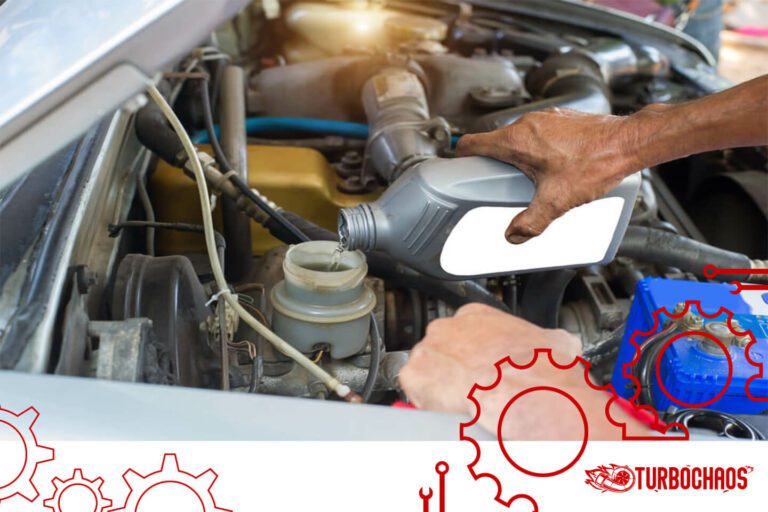Anatomy Of A Car Tire | All You Need To Know
The tread and belt assembly and the casing are the two major structural components of the Anatomy Of A Car Tire. There are multiple layers to these components. Let’s examine the parts of the tire one at a time, beginning with the road surface and moving inward to the center. We’ll also learn what function these elements serve.
Table of Contents
Anatomy Of A Car Tire
Modern tire technology combines a distinctive mix of chemistry, physics, and engineering to provide consumers with high comfort, performance, efficiency, reliability, and safety. Many tires have been specially created to withstand the strains and operate as a specific vehicle model manufacturer requires.

Every tire is thoroughly examined, and random samples are taken for added safety checks. To assess handling, mileage, and traction performance, tires are put through various tests, including x-rays, disassembly, and examination, running on test wheels, and road testing. Tires may last a very long if properly maintained; depending on the application, this can range from 40,000 to 80,000 miles.
The Outer Layer Tire
Let’s start with the tire’s outermost layers: tread and belt. The casing is encased by this mostly rubber part, which offers low rolling resistance, excellent handling, a long lifespan, and exceptional gas mileage.
The tread is made of both natural and synthetic rubber. This rough surface offers great mileage, good traction on the road, and water expulsion on a brand-new tire. This translates to always driving safely. Three sections of the tire tread connect to the sidewall and the road:
- The cap of your tire is the area with the most touch with the ground. It offers directional stability, wear resistance, and traction in all road conditions.
- Base: The base, located beneath the cap, lessens rolling resistance and harm to the tire’s casing.
- Shoulder: At the farthest points of the tread, this region provides the best transition from the tread to the tire sidewall.
Continental was the first tire company to add a tread pattern to the era’s pneumatic tires in 1904.
Cap Plies Without Joints: This layer beneath the tread makes travel at high speeds possible. Imagine repeatedly coiling a piece of twine while you gather it back into a ball. This is similar to jointless cap plies. They are made from a single, sturdy nylon cord embedded in rubber. This cord loops around the tire’s circumference without touching from one side to the other.
The Contribution Of Continental: This function was carried out using a rubber-imbedded woven linen fabric. But because of the friction caused by the crossed threads, the tire’s life would be reduced. Continental unveiled a brand-new cord fabric in 1923. The fabric (before described) contained cords that ran in a single direction and were held in place by supporting threads made of rubber. The improved fabric made tires last a lot longer.
Steel cord belt plies: In this layer, sturdy steel cables give the tire strength, which
- Enhances directional stability and shape preservation.
- Cuts down on rolling resistance
- Improves the mileage performance of your tires.
The Inner Layer Of The Tire
Let’s now explore the tire’s inner, also referred to as the casing or carcass. The casing acts as an inner tube, containing air and cushioning the tire. The load is carried by the air, not by the tire itself. The importance of inflation pressure is due to this. This is well-known to anyone who has ever had a flat tire!
The Ply Of Textile Cord: This textile layer, made of rubberized rayon or polyester, regulates the tire’s internal pressure and preserves its form.
Inner Lining: a butyl rubber airtight layer that performs several essential tasks:
- Controls tire pressure by sealing the inner compartment filled with air.
- Performs the function of an inner tube in today’s tubeless car tires.
- Sidewall: The tread shoulder connects the tire’s outside wall to the tread. The sidewall, made of natural rubber, shields the casing from environmental hazards.
Tire Bead
The tire bead component, a part of the casing, contributes to the tire’s edge’s ability to adhere firmly to the wheel groove. Here, air pressure keeps the tire firmly attached to the wheel. There are three components to the bead.
Bead Strengthening: This fine cabling is made of nylon or aramid, a kind of robust, heat-resistant synthetic fiber:
- Directional stability is improved.
- Enables accurate steering reaction.
A Bead Cap: A wedge of synthetic rubber for stability. The bead apex offers more steering comfort while carrying out the same functions as the bead reinforcement.
Bead Core: Steel wire is encased in rubber to form the bead’s core. The core makes ensuring the tire is securely mounted to the wheel rim.
How Tires Are Made?
A tire may look like a tough, air-filled black rubber doughnut from the outside, but there is more to it than meets the eye. You need to dissect one to know what lies beneath. We don’t advise you to cut open yours, but here is an example.
As you can see, the typical tire comprises several layers, with rubber being the most evident. Each tire has several layers of nylon and steel at its center, which give it strength and shape.

Without the nylon body plies and steel belts, the rubber could not maintain its shape under pressure. To retain the tire on the wheel, the body plies are wrapped around the steel bead wires. Bead wires, body plies, filler rubber, and steel belts are the building blocks for the so-called carcass, but other materials are required before this assembly can be referred to as a tire.
When fitted on the wheel, the thin inner liner is molded to the carcass to create a leak-proof (nearly sealed) chamber. The shoulder, sidewall, and tread cap are molded onto the carcass’s exterior.
The tread cap is molded with a tread pattern based on its intended purpose and is significantly thicker than the sidewall rubber. The shoulder, a transition zone between the tread cap and the sidewall, typically features a shallower continuation of the tread pattern.
However, off-road tires often have a stronger shoulder for better traction in off-road and aired-down conditions.
Intelligent Tires? A Review of Tire Characterization Literature
In a 2017 publication, authors Hojong Lee and S. Taheri conducted a comprehensive review of existing literature on the subject of intelligent tires, with a particular emphasis on the estimation of tire characteristics such as tire forces and contact patch features of a loaded rolling tire.
The review identified the contact patch attributes and the overall tire deformation as critical elements for estimating tire force. The authors examined the measurements necessary to characterize these estimation parameters and the sensors required for these measurements. The review also presented the estimated tire features and related algorithms based on the type of measurements.
The study revealed that the intelligent tire system can identify a wide range of dynamic features, including wheel forces, contact slippage, contact length on both dry and wet roads, and hydroplaning. The authors suggested that beyond its application for advanced vehicle control, the intelligent tire can also be used to analyze the tire characteristics themselves.
However, they noted that for the purpose of analyzing tire characteristics, well-established physical concepts must be incorporated into the estimation process.
This review is anticipated to serve as a valuable resource for researchers or developers interested in advanced vehicle controls integrated with an intelligent tire system, or those who wish to use the intelligent tire system for tire performance analysis.
Conclusion
Your tire’s innermost layer of the Anatomy Of A Car Tire is composed of a synthetic butyl rubber liner impermeable to gases to keep any air inside the tire from escaping.
Plies are the fabric layers that make up the tire’s body. The majority of your tires’ strength comes from these layers. Polyester is used to make the most common cord, which offers outstanding head resistance and controllability.
The tire bead is situated on the inside edge of the tire. The inner circle of the tire’s bead comprises a rubber-coated high-strength steel cable. The bead’s primary duty is to secure the tire firmly to the wheel rim.
The sidewall, which is the tire’s outermost layer on the side, is what you notice the most. It is made to shield the tire from curbs and other potential roadside hazards. Additionally, the sidewall provides additional protection against air leaks and prominently displays the speed rating, load rating, and tire measurements.
Source:
Frequently Asked Questions
What makes up an automobile tire’s anatomy?
Each tire’s structure comes from the several layers of nylon and steel that make up its carcass. Rubber would deform under pressure if not reinforced with nylon body plies and steel belts. The tire is held securely on the wheel by the steel bead wires that the body plies wrap around.
What component of a tire is the most crucial?
This is the area of your tire that is in direct contact with the ground. It offers directional stability, wear resistance, and traction in all road conditions.
What is the name of a tire’s interior?
The casing works like an inner tube because it holds air and pads the tire. The air, not the wheel itself, carries the load.
What three types of tires are there?
All-season, summertime, and winter tires make up the majority of automobile tires. All-season tires are more popular since they are simpler and less expensive to purchase than separate sets for the winter and the summer.

Welcome to the exhilarating world of Matt Rex, a professional car racer turned renowned vehicle enthusiast. Immerse yourself in his captivating blog as he shares heart-pounding adventures, expert reviews, and valuable insights on cars, trucks, jets, and more. Fuel your passion for speed and discover the beauty of vehicles through Matt’s engaging stories and meticulous expertise. Join the ever-growing community of enthusiasts who find inspiration and expert advice in Matt Rex’s blog—a digital hub where the thrill of speed meets the pursuit of knowledge.


![Subaru Sound Not Working [Causes + Solution]](https://www.turbochaos.com/wp-content/uploads/2023/06/Subaru-Sound-Not-Working-768x512.jpg)


![Car Leaking Fluid Front Passenger Side Tire [Causes + Fixed]](https://www.turbochaos.com/wp-content/uploads/2023/06/Car-Leaking-Fluid-Front-Passenger-Side-Tire-768x512.jpg)

